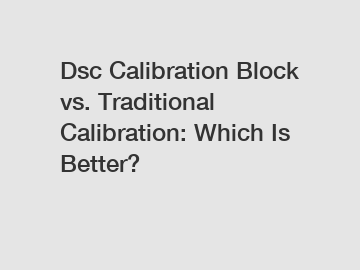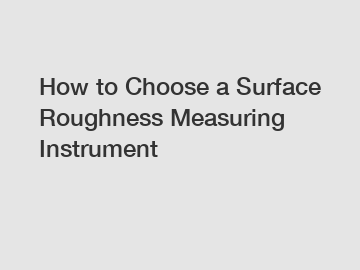How Should We Measure Drone Efficiency Today?
Sep. 20, 2024
Drones have transformed various industries, from agriculture to logistics, generating a need to define and measure their efficiency accurately. This blog post explores the parameters to measure drone efficiency effectively, based on recent research and data collection.
Measuring Drone Efficiency: Key Metrics.
1. **Flight Time**.
Flight time is one of the most critical factors. It provides insight into the drone’s battery life and the operational scope of its missions. On average, commercial drones have a flight time ranging from 20 to 30 minutes, dependent on their size and payload. .
*Data Point*: A survey noted that 45% of drone operators cite battery life as a primary concern affecting operational efficiency.
2. **Payload Capacity**.
The payload capacity of a drone directly affects its usefulness for various tasks. Understanding the weight a drone can carry will help in determining its efficiency in logs or delivery operations.
*Data Point*: Drones designed for delivery can carry an average payload of 2-5 kg, with some advanced models capable of carrying more than 10 kg for specialized tasks.
3. **Operational Range**.
The distance a drone can cover without needing to return or switch batteries is a significant indicator of efficiency. Units like the DJI Matrice 300 RTK boast an operational range of over 15 km, expanding the potential for varied applications.
*Data Point*: Research indicates that extending a drone’s operational range by even 1 km can enhance productivity by upwards of 20% in delivery services.
4. **Speed**.
The average speed of a drone, often ranging from 30 to 72 km/h, is crucial for efficiency assessments. Faster drones can cover larger areas, yielding better data collection and faster delivery.
*Data Point*: A comparative study revealed that increasing the speed of drones in survey missions resulted in a 25% reduction in time, thereby amplifying overall efficiency.
5. **Data Collection Rate**.
In industries like agriculture and surveying, the amount of data collected per flight helps define efficiency. Drones equipped with advanced sensors can gather vast amounts of data quickly.
Related articles:Maximizing Drone Efficiency: Key Measurement Techniques Explained
Vertical Tensile Tester vs. Horizontal: Which One Reigns Supreme?
Key Questions to Ask When Selecting a Coefficient of Friction Testing Machine
How to Choose the Right Paper Thickness Tester?
Dense Array: How to Optimize Big Data Processing in a Single Solution
How to Perform Box Compression Test Method?
Mastering Signal Generators: Top R&D Solutions Explained
*Data Point*: A top-rated agricultural drone can collect data from up to 160 acres in under an hour, making it 30% more efficient than traditional methods.
6. **Cost Efficiency**.
Analyzing the cost per operational hour helps in understanding if a drone is performing efficiently. The costs include maintenance, battery replacements, and operational training.
*Data Point*: It is estimated that the cost of operating a mid-range drone can be around $500 to $700 per hour, greatly influenced by fuel or battery expenses.
7. **Ease of Use and Automation**.
Drones equipped with automation software and AI can significantly save time and reduce human error. This automation in missions boosts productivity rates.
*Data Point*: A study showed that automated drones could increase mission efficiency by around 35%, as they are less susceptible to pilot error.
Visualizing the Data.
To help better illustrate these metrics, we've compiled the data into an easily shareable infographic. The infographic categorizes efficiency metrics in terms of Operational Range, Speed, Flight Time, and Cost Efficiency, making it easier for industry professionals to understand and implement enhancements in their drone fleet management.
[Insert Infographic Here].
Promoting the Findings.
To ensure this research reaches the right audience, we will share this blog post with influencers and publishers in the drone industry, including online forums, social media platforms, and industry magazines. Engaging with authors and publications that cover drone technology can help amplify our findings, generating discussions and potentially leading to further research.
Conclusion.
By understanding and measuring drone efficiency across these varied metrics, businesses can optimize their operations, improve productivity, and reduce costs. As drone technology continues to evolve, adapting these efficiency measures will provide key insights necessary for maintaining competitive advantages in the marketplace.
Are you interested in learning more about drone efficiency measurement, drone measuring device, engine test bench? Contact us today to secure an expert consultation!
Related articles:How to Choose a Signal Generator for R&D?
Mastering Vacutainer Drawing: Volume Tester Solutions
Essential Guide to Electrical Power Quality Testing
Electrical Power Quality Testing: Traditional Methods vs. Modern Solutions
Understanding Hardness Tester Prices: A Comprehensive Guide
How to choose the best power quality analyzer?
How Audio Frequency Counters Redefine Sound Quality?
92
0
0
Related Articles
-
50
0
0
-
49
0
0
-
81
0
0
-
84
0
0
-
34
0
0
-
33
0
0
-
39
0
0
-
30
0
0









Comments
All Comments (0)